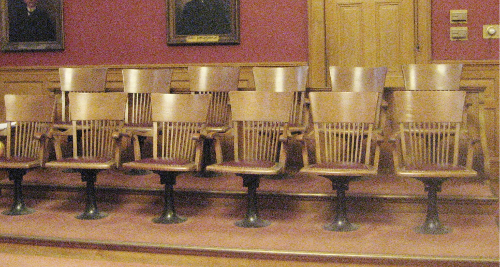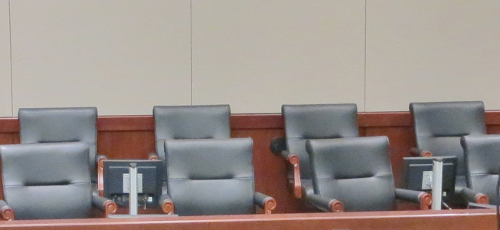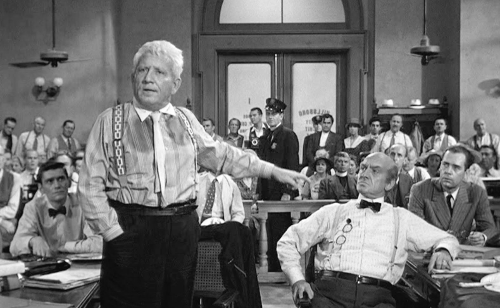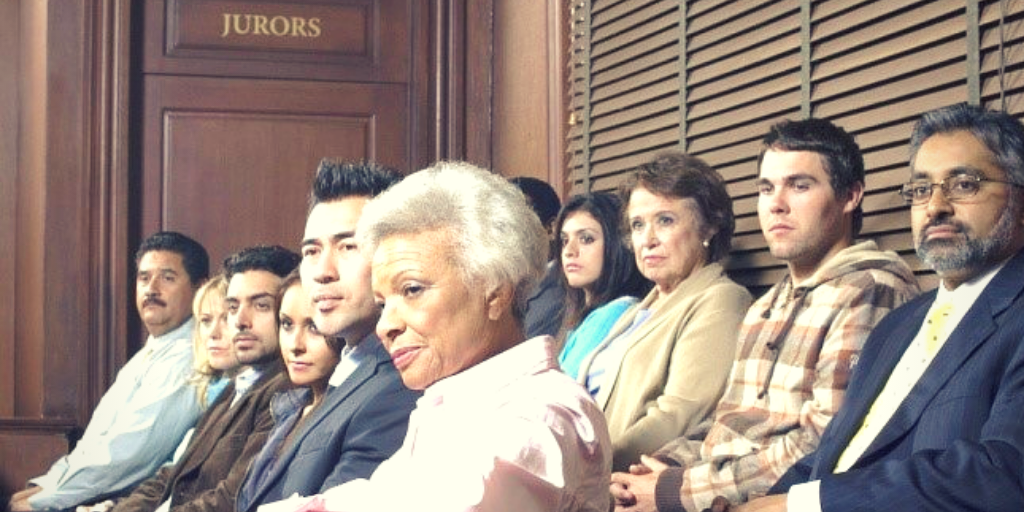Whenever I visit a courtroom, one of the first functional areas that I consider is the jury box in the courthouse planning process. The condition of the jury box is of particular interest to me since this is where ordinary citizens, like myself, are introduced to the American judicial system. It is where we are asked to perform a civic duty; often for long days or weeks at a time. I usually picture myself sitting in one of the juror’s chairs, which often leads me to ask the question: How well could I focus on a long trial sitting there?

Focusing on a long and complicated trial proceeding can be challenging under any circumstances. I have to believe that the well-padded swivel chairs, each facing personal evidence presentation screens, as found in the more contemporary jury boxes, make concentrating a much easier effort. I also know I would start squirming within moments of sitting down in the tightly-packed, wooden chairs shown in the photo above.

Most jury boxes that I see during my courthouse inspections are well designed and properly positioned in comfortable courtrooms such as the one in the photo above. But there are exceptions. I have seen jury boxes furnished with wooden, fixed and stand-alone chairs that are more appropriate to the nineteenth century. I have also visited several courtrooms with the jury box backed up against south facing windows that provided both heat and glare. In one courthouse, I found the jury box backed up to the full-height, ground-floor windows that were located only a few feet from the public sidewalk. If I were sitting in that jury box, I know that I would be continually turning around to see who was watching me. When I encounter courtroom conditions such as these, I shake my head in wonder. How I could concentrate under such conditions?
Our Caveman Roots
I recently wrote about how our basic human needs influence design. These needs, such as natural light in office spaces, date back to our caveman roots; the dawn of Homo Sapiens.
While writing that article, I began to consider some of the basic human needs that might affect a courtroom. In particular, how meeting or not meeting those needs might affect a jury. Although the judge manages the jury trial, it is the jurors who collectively reach a verdict and determine the trial’s outcome. It is therefore critical that they be given every opportunity to concentrate on their job without undue impediments or distractions.

Basic Human Needs
As I noted in my Basic Human Needs post, safe and pleasurable environments promote productivity and functionality. Those that seem dangerous inhibit our ability to function normally. In researching the subject, I found several observations that could be applicable to the function of the jury in a trial courtroom as follows:
- The confirmed genetic preference for sitting in a safe, sheltered location overlooking an expansive area, originating with our ancestors’ searching for prey or danger, suggests that a jury box might best be designed with a slight elevation above the courtroom well and located adjacent to a solid wall, rather than at floor level away from a courtroom wall. Clear sight lines to the other trial participants is also part of this genetic-based inclination. Interestingly, this is precisely how virtually all ideal jury boxes are arranged already. However, many courtrooms suffer from poor layouts that do not allow for ideal jury box placement, such as the jury box by the windows (as described above). In the past, I have seen jury boxes away from the walls, especially in circular well areas. Likewise, I have seen chairs at floor-level, grouped together for the jury instead of being placed in a separate box.
- The recognized genetic tendency for people to feel less mentally constrained, and instead think more broadly, in taller spaces has clearly manifested itself in the established standard for a high-ceilinged courtroom. In courtrooms with low ceilings, strategies should be considered to increase the height of the ceiling over the well area, including the jury box.
- We focus better on a task that requires precision in a still environment, although complete silence can be detrimental to successfully performing a task that requires creative thinking. Courtroom acoustic standards and electronic audio and video aids have for some time addressed this basic need.
- Our inclination toward compromise when seated on soft furniture while reacting more rigidly when seated on hard furniture has not yet become a basic design principal for jury boxes. Perhaps the ideal seating is a middle ground, with comfortable – but not plush or hard – seating.
If jury members react in a similar manner to people in other well-documented studies, the requirement to accommodate basic human needs is absolutely linked to the ability of the jurors to focus on the court proceedings.
Jury Box Evolution Continues
Still, our past may not have been responsible for establishing all basic human needs. People evolve. Despite the fact that our ancestors’ caves were not environmentally comfortable or attractive places, I suspect that a hot, cramped, and deteriorating courtroom would not feel either genetically familiar or comfortable to a modern-day juror.

I have inspected and analyzed hundreds of courtrooms over my career. Irrespective of that fact, the one image that first comes to mind when I think of a deficient courtroom is the one portrayed in the 1960 Spencer Tracy movie Inherit the Wind about the “Scopes Monkey Trial.” The trial concerned the question of the legality of Mr. Scopes teaching evolution to his students in a rural Kentucky school. It was a hotly contested topic at the time and the trial went on for days. The 1920s era Tennessee courtroom depicted in the movie was obviously not environmentally comfortable or visually attractive, and probably not a place where most people would want to spend a great deal of time.
The movie portrayed the courtroom as being cramped and uncomfortably hot. It is just speculation, but perhaps the courtroom conditions help explain why the jury rendered a guilty verdict in just nine minutes. This was an important trial and an important verdict to consider. It should have justified a greater amount of time and attention. However, I also suspect that under the same conditions, I might want to get the process over with, too.

















